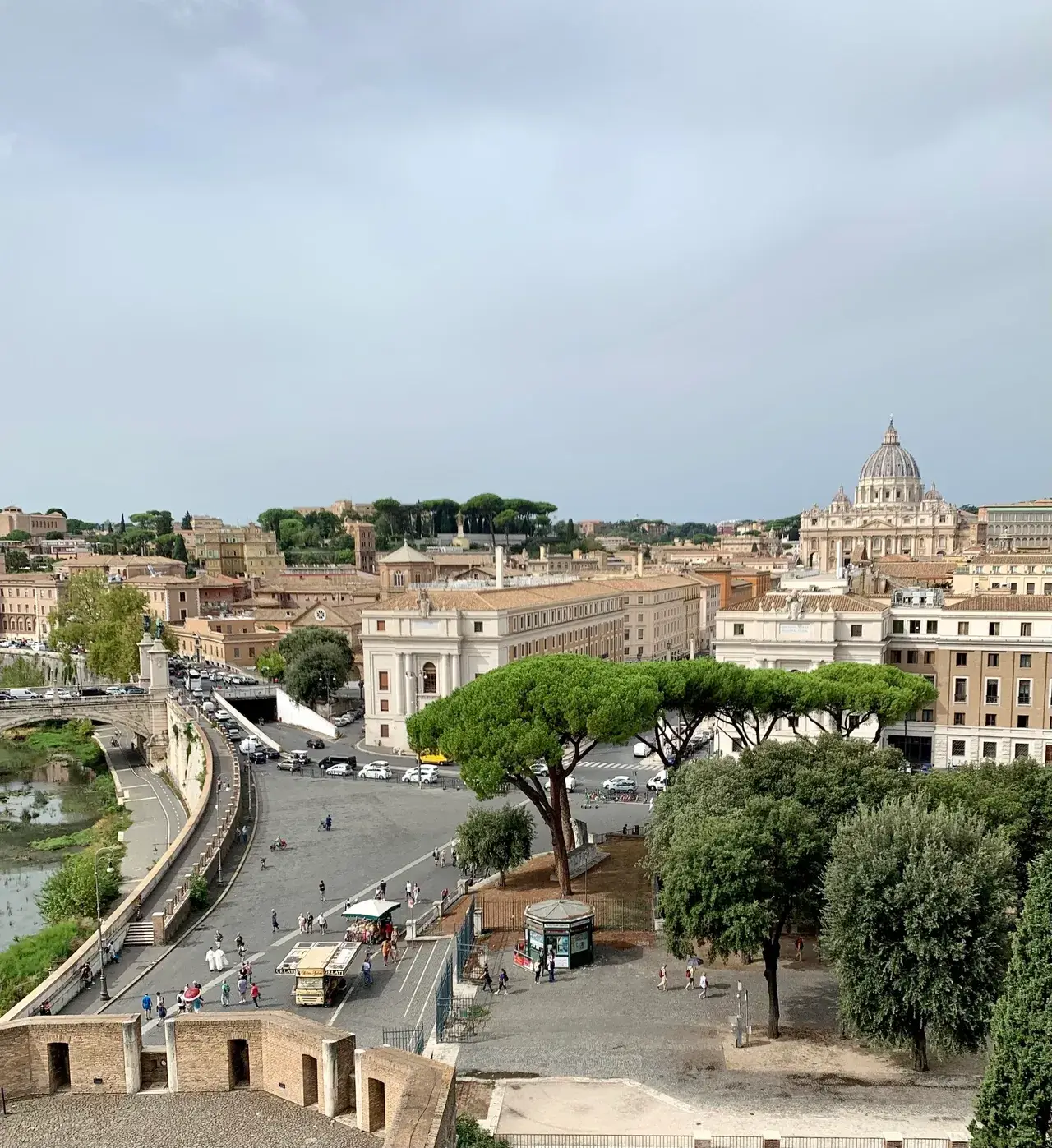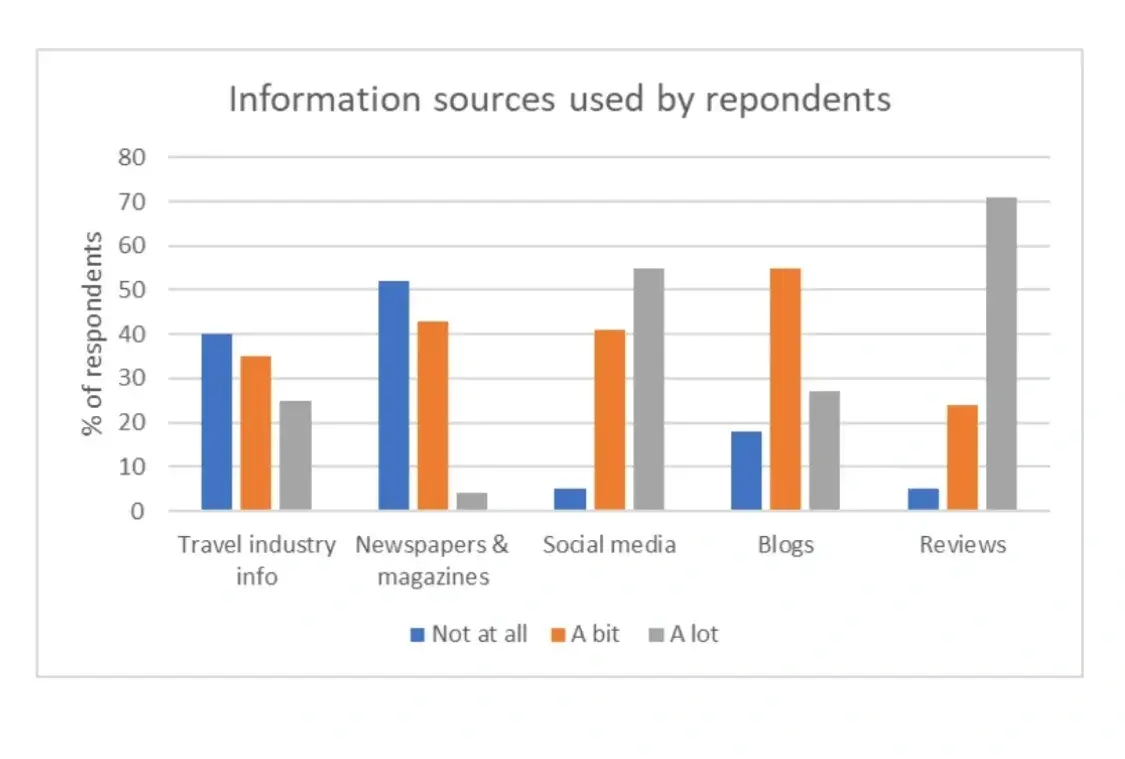Which information sources can I trust when planning my trip?

Rome, Italy
y Dr Charlotte Russell, Clinical Psychologist
Travel is big business. In 2022 the travel industry was forecast to be worth $1.67 trillion according to statista. With an industry this size, there is an enormous amount of travel related information available. But how can we ensure the information we’re consuming is credible? In this article I’m going to talk you through the credibility conundrums when it comes to travel information and provide tips on how to take information with an appropriate pinch of salt.
Ensuring we are savvy with our information consumption
Let’s start by asking ourselves an important question; what do we as consumers need to know to be savvy with the information presented to us?
Media literacy is the ability to consume a media product and identify its target audience, it’s message and who stands to benefit from the message (Vahedi et al., 2018). It’s how skilled we are to understand the message presented to us and to evaluate it’s credibility. This is really what we need to be able to do to consume content savvily.
Bergsma & Carney (2008) studied the components of media literacy interventions. Boiled down to their most basic components, media literacy training teaches people to:
· Understand that media messages are constructed, and do not represent real life experiences
· Recognise that marketing and advertising techniques are used to create media messaging
· Recognise that messages often have embedded points of view, which may include values and stereotypes
· Understand that most media messages are constructed to gain profit and/or power
Essentially these skills are about understanding where information comes from, the biases that it might contain and having a healthy (but not extreme) scepticism for the information we consume.
So with this in mind, lets move on to thinking about where we may get our travel related information, and the issues with each of these.
The travel industry
Information from the travel industry itself is one area where a healthy scepticism is required. Clearly the information presented to us directly from the industry is designed to sell us trips But, that does not necessarily mean the information is always unreliable. Building trust with customers is important and so it is in the interest of the industry to ensure information is accurate. However, it is safe to say sometimes the truth is stretched!
Greenwashing is an important example of when claims are made, that on closer inspection don’t add up. This article by the Guardian illustrates how Green washing is a growing problem in the travel industry . It is very easy to see a badge on a hotel website that says ‘eco’ or ‘sustainable’ and to trust that this is true. However the responsibility is really on us as travellers to dig a little deeper and to explore what these claims actually mean and how they are put into practice.
This article by Conde Nast Traveller provides tips on the best way to avoid greenwashing while travelling Their advice includes to be aware of buzzwords and ‘feel good fluff’; look for concrete examples of what hotels and resorts are actually doing. Also look out for credible certifications in sustainable travel; as an example Intrepid Travel have achieved B Corp Certification which is a credible seal of approval that their operations are responsible.
Fake news
Fake news is not a new phenomenon, but has become real challenge in recent years due to the rapid transmission of fake news through social media. This has included information in the tourism sector (Vasist & Krishnan, 2022). We really know very little about to what extent fake news influences tourism and tourist behaviour due to the minimal research in this area. However it is important for us as consumers to be aware of the possibility of fake news in influencing our travel behaviours, and to ensure we are obtaining information from credible sources.
Destinations and sights
When it comes to seeing attractions in real life, there are some occasions when we really should not believe our eyes. As an example, the ‘goat trees’ in Morocco have become an infamous tourism sight. This article in the telegraph reveals how these are actually staged by local farmers and are unethical for the goats’ welfare. Many tourists visit these destinations, and are blissfully unaware that this is not a real phenomenon and that the goats do not climb the trees wilfully. I’ve also seen the images shared on social media without awareness of the reality.
This is a good example of how reality can be distorted in order to attract tourism and to gain profit. As tourists and travellers we should be sceptical that sights that attract tourist attention are not always what they seem. As illustrated in my previous article about dark tourism, sites and sights can also be presented in an unethical way to attract tourism and profit.
Social media
Social media can be problematic as information is often shared without due checks on the accuracy or credibility of the source. Information shared is also usually short which can make it difficult for users to assess the credibility of the source and the message (Keshavarz, 2020)
A review into credibility in social media suggested that there are several indicators we can look out for that are associated with credibility (Keshavarz, 2020). Related to the source of the message, this includes expertise, educational background, affiliation, believability, competence, authenticity and transparency. In terms of the content, indicators of credibility include readability, an appropriate level of detail, and information being presented well. Credibility is also indicated by neutrality of information, no intention to sell, up to date references, usefulness and reliability.
Despite not always ticking every box on the credibility checklist, many social media influencers continue to thrive, with thousands of followers. This is because most people don’t use social media for information; we scroll through for entertainment purposes and successful influencers are usually good at creating content that stands out, entertains or inspires. Of course it is ok to consume this kind of content, but we must be aware that often information is presented to gain revenue and to portray an aspirational lifestyle. Whilst we may enjoy consuming this kind of content, it is so crucial to understand and remind ourselves that the images we see are not real life.
Blogs
Blogs and vlogs are user-generated content, independent from the travel industry and so the information they provide can be less biased. However, they can of course vary hugely in their quality and credibility, and like influencers, bloggers can portray certain views in order to gain advertising or to increase traffic to their website or channel.
The research evidence tells us that readers of travel blogs do so for two reasons; for enjoyment and to gain useful information about destinations. There is limited research in this area, but the available research suggests that readers are more likely to engage with blogs and use information when the blogger is perceived as credible (Mainolfi et al., 2022). In this study, credibility was defined as the blogger being well informed about travel, having sincere motivations and being perceived as trustworthy.
Consumer reviews
Many of us trust consumer reviews as we believe that they will not be biased, as genuine reviewers do not stand to benefit from sharing their experiences. In fact, the research suggest that genuine reviewers tend to do so in order to help others and due to the belief that leaving reviews empowers us as consumers (Gonçalves et al., 2018). These are good reasons, but of course the problem with reviews are that not all of them are genuine and unbiased.
A study exploring the content of reviews was able to identify some differences between real and fake reviews. On the whole, genuine reviews talked about experiences and feelings in a hotel or destination, whereas fake reviews tended to talk about more concrete aspects and tended to be more absolute in their evaluations (Martinez et al, 2019).
This article by The Times highlights that many of us use reviews as part of the booking process but asks can we really trust them? The article highlights how producing fake reviews can be a lucrative business. In line with the academic study, it advises to ignore extreme reviews, for example 1* and 5* reviews and those that speak in absolutes. However the likelihood is that scammers will eventually pick up on this and will alter the fake reviews accordingly.
Where do we get our travel information?
In order to shed some light on this topic, I ran an Instagram poll of our community. It is worth saying that a social media poll of travel lovers is a very biased sample, and not at all scientific! However it is interesting to hear how others, who may be similar to us, get their travel information.
My question asked “When planning your travels how much do you use..” with the following options. Twenty-three of you took part and the findings were as follows:

Conclusion
Whatever sources of information we use to plan our travels, there is a potential for bias in each of these. We can navigate this as consumers by being aware of this, and by being appropriately sceptical of the information we consume. Using several sources of information can help us to verify content. We can also look for markers of credibility, including information coming from credible sources and information appearing appropriately detailed and balanced in how it is presented.
References
Keshavarz, H. (2020). Evaluating credibility of social media information: current challenges, research directions and practical criteria. Information Discovery and Delivery.
Mainolfi, G., Lo Presti, L., Marino, V., & Filieri, R. (2022). “YOU POST, I TRAVEL.” Bloggers’ credibility, digital engagement, and travelers’ behavioral intention: The mediating role of hedonic and utilitarian motivations. Psychology & Marketing, 39(5), 1022-1034.
Martinez-Torres, M.R., Toral, S.L., 2019. A machine learning approach for the identification of the deceptive reviews in the hospitality sector using unique attributes and sentiment orientation. Tour. Manag. 75, 393–403
Vahedi, Z., Sibalis, A., & Sutherland, J. E. (2018). Are media literacy interventions effective at changing attitudes and intentions towards risky health behaviors in adolescents? A meta-analytic review. Journal of adolescence, 67, 140-152.
Vasist, P. N., & Krishnan, S. (2022). Demystifying fake news in the hospitality industry: A systematic literature review, framework, and an agenda for future research. International Journal of Hospitality Management, 106, 103277.
